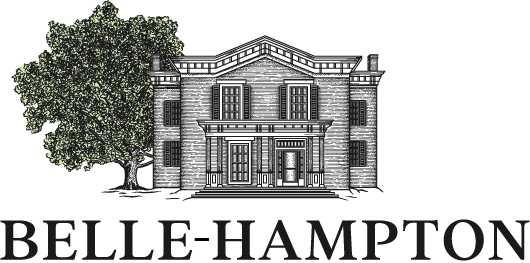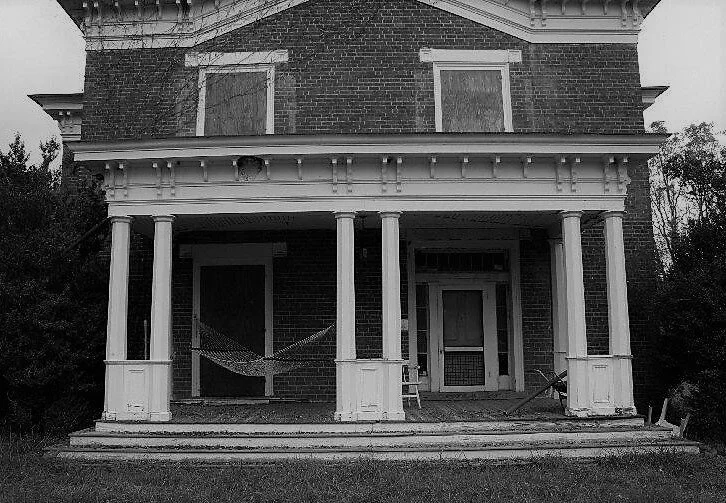The Significance of Old Places and Structures
Belle Hampton in 2013
In a throw away society, old homes, to many, seem irrelevant. A structure may be perceived as stopping progress when designing and developing a community. The “Green” home trend where the focus is on the efficient use of "energy, water, and building materials", seem to exclude the homes from yesteryear. Instead, it is easier to tear down than to restore. But I would disagree since old places connect us to earlier generations and generations to come. Through success and struggles, they tell the story of who we are. A “rootedness” which helps move us smoothly through the transition of time.
An individual or collective memory of a place helps us remember the the stories long after a person is dead and gone. George Santayana observed that "Those who cannot remember the past are condemned to repeat it." But a collective memory transcends us as mortals. They serve as flash points of history, good and bad. Many argue over the meaning of what old places represent such as the Battlefield of Gettysburg, which may or may not acknowledge both the winners and the defeated. But visiting the location of the battle allows us to have a understanding of how the geography shaped history. When the unpleasantness of the past is not in the discussion, the fear of reoccurring episodes are possible. By removing the uncomfortable, but factual past, we eliminate the lessons learned. As we evolve in the interpretation of history, it is important to keep a place or structure in existence, allowing us to create new memories reflecting our current identity as a culture.
Unfortunately, many historic structures are destroyed purposely either for necessity or vengeance. Since Nazi Germany believed that Poles were racially inferior, they strategically planned the destruction of Warsaw’s Old Town prior to World War II. Their concept was to destroy a nation's morale and culture by demolishing important physical and architectural treasures. No ancient historical building was spared. Remembering stories my dad told of the war while fighting as a Polish American, he described locals throwing themselves in front of cherished bridges which as a technician for the engineer combat battalion, he was assigned to blow up. Damaging bridges to disrupt the enemies ease of movement is a fundamental part of war, to some a strategic prerequisite, but it contributed to the loss of significant structures which bound a community and country together. The Nazi’s overt plan as stated by SS chief Heinrich Luitpold Himmler “The city must completely disappear from the surface of the earth”, was more sinister. Either purpose for necessity or vengeance resulted in the same outcome. “The loss of real buildings, real people and real history.”
A special place in my heart, but also scared throughout the world, are old cemeteries and memorials for those who have passed on. Normandy has an American cemetery which honors those soldier who died in Europe bringing tourists from around the globe to pay respects. The World War II memorial in Washington D.C. who’s mission is to “Guard the legacies and honor the sacrifices of American veterans. Through oral history preservation, documentary films, educational programs and civic events, they work to ensure Americans do not forget these sacrifices.” Sixteen years ago my dad was honored at the memorial and his oral account of the war was recorded and preserved before he died. But just sacredness of a place can cause memorials to be targets for destruction. It sadden me to see what happened during the protests and riots of 2020 with the vandalism of the monument. Although I was not aware of the challenges of the GI Bill for blacks, my heart broke for those who served and were honored at the memorial.
Old places although not often seen as contributing to the green movement is actually the greenest building since it is already built. Those looking to avoid the environmental impact of extraction, processing and transporting materials for construction, realize that a building which exists does not have that negative climate change impact. Land conservation to preserve forests and wildlife habitat is easy when reusing already developed land. The operating energy that old buildings were already designed around are inherently green. My personal favorite is the passive design to take advantage of naturally occurring energy like light which has become obvious to me in the restoration of Belle-Hampton. Since we made sure we were being particularly energy efficient with our renovations, we insulated sufficiently and changed to new windows. To quote Scott Doyon, principle of Placemakers, “If you tear down a storied and graceful historic building - hand-built and rooted in tradition, in which generations of people have crisscrossed into and through each other’s lives - and replace it with high-performance, modular gizmo-green equivalent, how much embedded energy is lost if you also count the loss of a soul.” Preserving Belle-Hampton was a labor of love, contributing to sustainability is the frosting on top.
As we put our finishing touches on the preservation of Belle-Hampton, I reflect on over 250 years of stories. We are blessed with a well documented history of the family, the home and the community. Spanning the decades of joyous occasions from parties to weddings and the near miss of being destroyed in the Civil War, Belle-Hampton bears witness to it all. Stately in it’s architectural beauty, she shares the experience our ancestors lived, worked, built and died. To quote Thompson Mayes, “If we can see the past, it makes us believe in the future.” Now that I have told our story, tell me what places matter to you and why?

